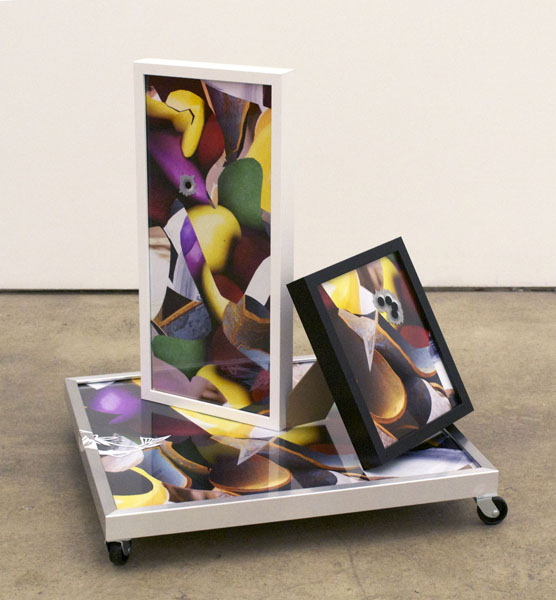



Featured image: Aram Bartholl, Forgot Your Password?, 2013
Historical art is developed by way of its respective era and society, meaning that it is always made in the present. Today, new technologies open up new possibilities for artistic potential. Currently, art production, which is influenced by new technologies, is reacting strongly to the changing times. Artworks are being created, which react to digitalisation, even if they don’t necessarily reflect the digital format itself (i.e. like works by Aram Bartholl).
In its purest form, digital art is ephemeral and based on a transient technology. The continual advancement of the technology demands on-going improvements; challenges from which many emerging artists refuse to be deterred. On the contrary: the monthly quota of events related to digital art proves the high level of interest around the form.
The global technical networks thereby bring about new atmospheres, or perhaps, infospheres, as media theorist Peter Weibel calls them. In the art world, previously held art-historical considerations are forced towards a re-evaluation. Conventional theories and practices must be called into question. New art forms in the immaterial digital domain demand a general rethink in terms of their conservation, presentation and acquisition. And, of course, the reception of digital art is also different.
According to studies by Hiscox, a preference for original works still dominates both in conventional and online trade. Authenticity and intrinsic value continue to be important criteria when it comes to decision-making regarding the purchase of art. Transparency will remain, for the long term, a fundamental prerequisite for the establishment of trust.
Most acquisitions of digital art take place conventionally by way of galleries. If a collector acquires, for example, a website, then the gallerist sells he or she a domain (which is unique!) and transfers in-addition, a licence contract. This is a material document. The ‘network’ remains virtual, while retaining open all of the attributes of an artwork in the source code, i.e. the artist’s signature, the title, the year in which it was produced, the technique, and information on the programmer or the collector.

The collector can enjoy the work beyond the confines of time and physical location. Simultaneously, he or she is responsible for its preservation, which is the guarantee for the continuation of its existence over time.
Internet art in general is dependant on software, but above all it relies on hardware (computer, hard-drive, interfaces, sensors, monitors, projectors, etc.). Yet for how long will the hardware remain a part of our interactive culture? Forward-looking collectors purchase, in addition to the contract, a series of devices that safeguard the work for the future.
The ability to learn about new approaches in our fast-moving culture occurs both naturally and dynamically. The art market is an extremely non-transparent market, access to the right networks and contacts. Is this likely to change any time soon?
Art history shows us that artists are ahead of their time, anticipating what is to come. One need only cast an eye around the scene, in order to open the door to new ideas and technological marketing methods in the art world.
The German artist, Stephan Vogler, has already done this and in cooperation with a law firm has unleashed intelligent synergies. The artist himself produces digital files – intangible goods, as he calls them – which should also naturally migrate to the art market over the long-term, in the best case scenario, as unique pieces which one – such is the thinking within his system – can acquire with Bitcoin.

Far more interesting than the means of purchase, is the Bitcoin technology that lies behind it.
Stephan Vogler has developed a licence together with experts on legal practice within the art world, which transforms the digital artwork into an independently tradable virtual commodity, which is limited, both in terms of its technology and its legal rights. The system is based on a license agreement under the utilization of the Bitcoin technology. All works will come with an electronic signature, which is recognized, in legal terms, as being an original signature. This also serves as proof that the files existed at a given moment in time. Their authenticity is mathematically verifiable and the right of resale is exclusive. Virtual ownership is technically and legally limited to the respective owner. The owner of the usage rights is registered in a decentralized Bitcoin Blockchain, and the rights regarding the work are assigned through a Bitcoin transaction. In this way, digital artworks become both tradable and collectable objects without the requirement of their materialisation. Purchase and transaction take place simultaneously and the function of the custodian is eliminated. The structure behind the acquisition is thereby extremely transparent.
Artists like Stephan Vogler want to revolutionize the market for digital art through new technology. But independent from this fact, the art world is not sleeping. Collectors, institutions and art market platforms are already taking note.
For example, Austria’s Museum for Modern Art (MAK) has already bought an artwork with Bitcoin.
Cointemporary.com, a curated online platform, offers ephemeral artworks at a fixed Bitcoin (BTC) price – independent from the actual exchange rate. Berlin company ascribe.io develops systems within the Blockchain technology and offers services for art experts, assisting in the professional management of their digital files, i.e. their registration, archival, transfer of ownership etc.
The Winklevoss twins are known as great advocates of the digital currency. Rumours about investments in the art form are rife.
The acquisition of artworks via Bitcoin sounds forward-looking and simple yet should be enjoyed with a good degree of care. The reason for this is that Bitcoin is not controlled by a state and its central bank, but rather is generated by Internet users by way of complicated arithmetic calculations. So what might be the advantage of a Bitcoin purchase?
Collectors of digital art, such as the Belgian, Alain Servais, or Hampus Lindwall, from Sweden, view the purchase of work via the risky Bitcoin currency with scepticism.
It is still too early to really be able to judge the effects of these developments. Ultimately, the discussion as a whole concentrates far less on the system of currency than on the technology itself, which can also be applied to other circumstances. These experiments will only truly bear fruit through the development of a high degree of know-how, the courage to take on legal consequences at the moment of purchase, and through simple decisions in a user-friendly design.